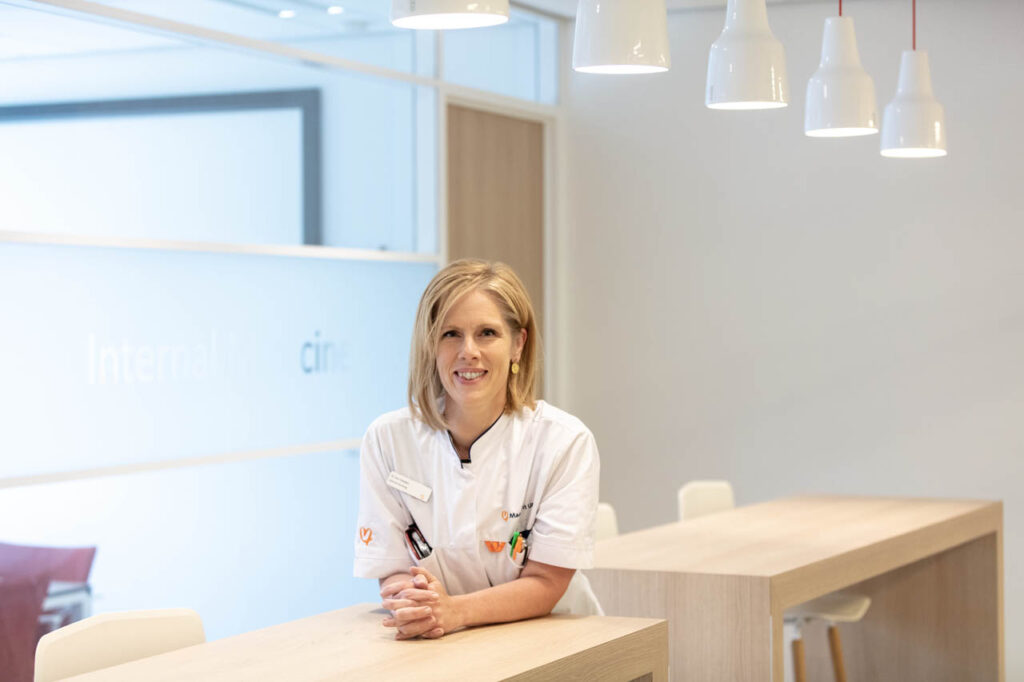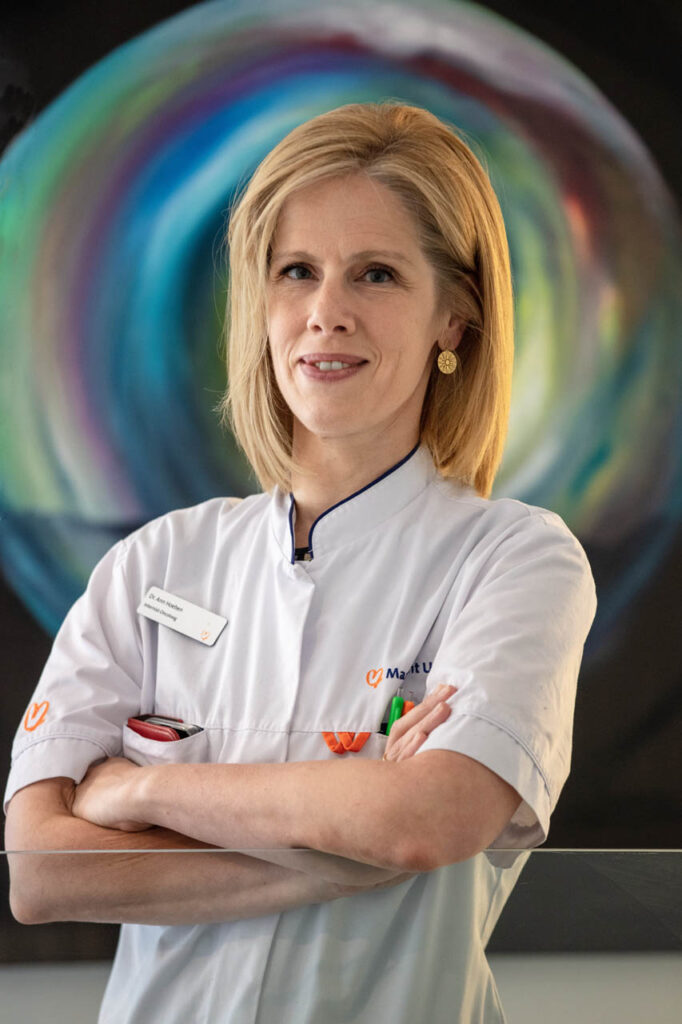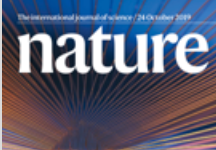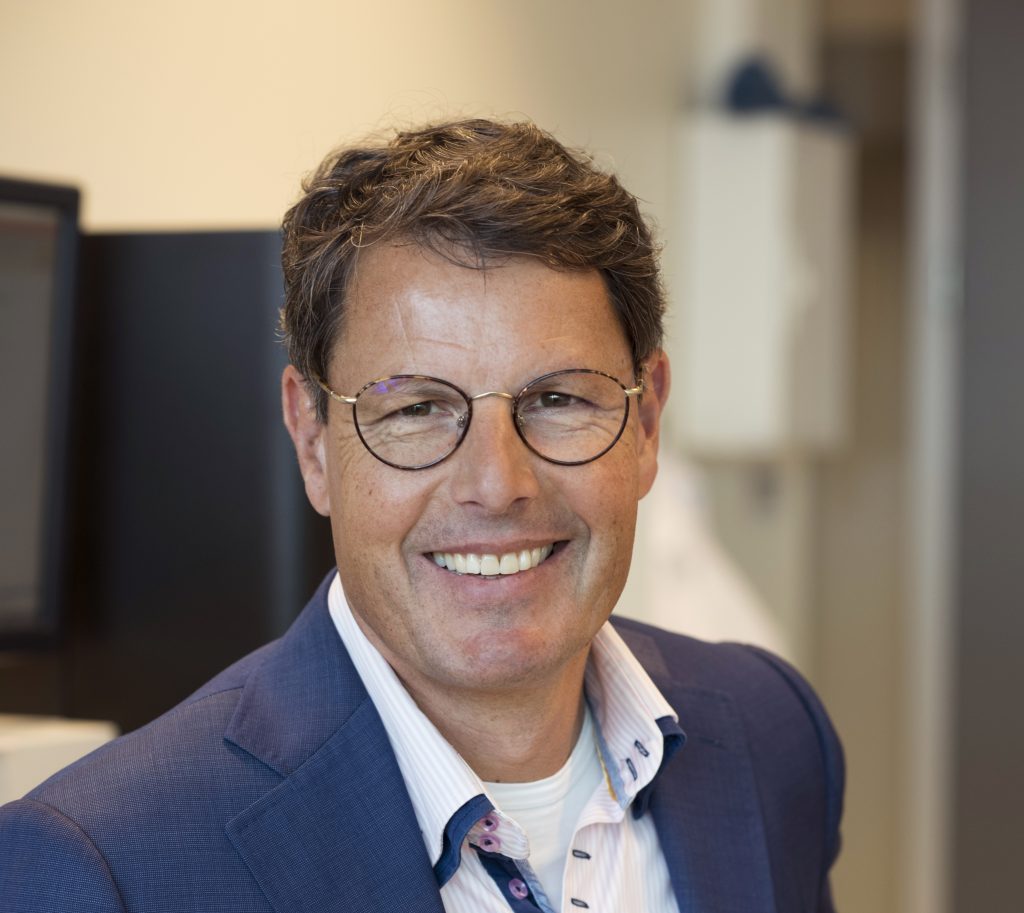In search of the optimal treatment strategy for glioblastoma

Patients with recurrent glioblastoma have an unfavorable outlook and few treatment options. The recently launched GLOW study should change this prospect. Ann Hoeben, medical oncologist and responsible for the study’s patient inclusion at the MUMC+: ‘We are participating because we want to improve the treatment perspectives for patients with glioblastoma.’
‘Glioblastoma is the most malignant brain tumor we know of, for which there are no curative treatments yet,’ says Ann Hoeben. She has a subspecialty in head and neck oncology and neuro-oncology. ‘There is only one treatment regimen: a combination of radiotherapy and chemotherapy in the form of temozolomide. With this, we can offer only a few months of survival benefit. We have been offering this treatment since 2005.’
Despite multiple clinical trials for new drugs, no treatment has proven to improve survival, which is only 15 months on average. Hoeben finds that problematic for patients with this diagnosis. She heard about the GLOW study when she was approached by the study team. ‘We still cannot offer our patients anything other than the standard first-line treatment. With the results of the translational research currently available, we do not yet have enough tools for effective treatment of this tumor that could improve the survival time of our patients.’
Recurrent glioblastoma
The GLOW study seeks to fill that knowledge gap by focusing on patients with glioblastoma, in whom the tumor continues to grow after first-line treatment. In patients with this recurrent glioblastoma, reoperation is sometimes possible, to again remove as much tumor tissue as possible. This can provide some patients with several months of additional survival benefit. A reoperation is currently no standard care, mainly because neurosurgeons can never completely remove the tumor. Moreover, often there are no available follow-up treatments able to destroy the remaining glioblastoma cells.
A complete DNA analysis with whole genome sequencing (WGS) analysis on the tumor tissue could clarify which alterations in the DNA stimulate tumor growth in recurrent glioblastoma. That can also shed light on whether these so-called drivers provide handles for customized treatments. The approach of the GLOW study can thus provide enormous added value for science, Hoeben believes. ‘It might help us understand why a treatment does or does not work and, as a result, let us discover additional treatment options. I hope this will allow us to improve the prognosis in the future.’
Customized treatment
An additional benefit for patients is that WGS results from the GLOW study may uncover opportunities for experimental study treatments. Patients would not otherwise qualify for these. Also, Hoeben believes, increased knowledge about the clinical picture may allow for more customized treatments in the future. ‘With a WGS analysis, we get a better picture of what happens in this phase of the disease. For future patients, that is very valuable.’
Meanwhile, in the MUMC+, Hoeben and her colleagues have streamlined GLOW study participation. ‘During our multidisciplinary neuro-oncology consultations, we discuss the treatment course of our patients with glioblastoma. If we identify tumor progression after first-line treatment, and another surgery is possible, we consider GLOW study inclusion. We then discuss the study with the patient. If they are open to participating, we arrange the informed consent. From there, the trial office takes up the inclusion.’ One of the inclusion criteria is the possibility of safe re-resection: the tumor must be easily surgically accessible, and there must be a possibility for safe removal. The patient’s functioning also plays a role, Hoeben says. ‘He or she must have sufficient physical and cognitive capacity to undergo the surgery and follow-up treatments.’
Logistical challenge
Tumor tissue collection is well organized at the MUMC+, Hoeben says. ‘For the GLOW study, we send tumor tissue that is freshly frozen. That was a logistical challenge because, during regular surgery, we have the tissue embedded in paraffin for the pathologist to examine. For the GLOW study, we had to set up a separate pathway, ensuring the tumor tissue is freshly frozen and sent immediately to the GLOW study team for the WGS analysis.’ For this purpose, a trial or neuro-oncology nurse is present during the surgery. ‘We do inform the surgeon in advance, but this way we mitigate any errors.’
The entire team involved in the GLOW study, including trial or neuro-oncology nurses, was briefed on the purpose of the study by the study team. ‘At the initiation visit, the study team was at the MUMC+’, Hoeben explains. ‘That was valuable. Everyone involved in the study, from the principal investigator to nurses, understood how to inform patients and how to handle tumor tissue.’ Hoeben finds the GLOW study team accessible and approachable. ‘If we have a question, we can always contact them. The whole process around the GLOW study runs smoothly because of that.’
Slow start
Currently, the MUMC+ has included one patient in the GLOW study. The slow inclusion is in line with expectations, Hoeben says. ‘The main reason is that patients with recurrent glioblastoma are often not eligible for reoperation if the tumor does not turn out to be safely surgically approachable. Moreover, the condition of patients with recurrent glioblastoma often is too poor for re-resection.’
Hoeben knows that the place of re-resection in the treatment trajectory of recurrent glioblastoma patients has not yet been proven worldwide. ‘There are differences between hospitals regarding the policy for reoperation in this patient group,’ says Hoeben. During a resection, a surgeon tries to remove as much of the tumor as possible. In doing so, the acceptable resection rate varies among centers. ‘In some centers, a resection of 60 to 70 percent of the tumor is acceptable,’ Hoeben says. The MUMC+ has a more conservative policy. That means that in Maastricht, glioblastoma patients undergo re-resection less often than elsewhere. ‘However, in every hospital, the added value for the patient comes into play,’ Hoeben says. ‘They are in their last phase of life. It remains a subjective consideration whether we should do another operation on them.’

Treasure of tissue
The GLOW study will yield a wealth of information, Hoeben knows. ‘This cohort will be interesting to further analyze. In addition to WGS, I hope that people will also start using the tissues to look at components of the tumor microenvironment.’
In addition, researchers can compare the results of the GLOW study with previous tissue samples from the same patient. ‘There is a need to expand research into the development over time of glioblastoma in the same patients,’ Hoeben says. ‘Treatments may also affect tumor cell expression factors, especially microenvironment composition. These may be different in recurrent glioblastoma than in a newly diagnosed setting. This study may provide valuable information about how a glioblastoma becomes resistant to treatment. With this knowledge, we can innovate and optimize the current treatment strategy.’
More targeted treatments
Hoeben believes that the GLOW study, and WGS in particular, can uncover new biomarkers for glioblastoma. These could not only form the cornerstone for new treatment strategies but also guide treatment combinations in individual patients. ‘In the clinic, WGS is already the standard of care for metastatic cancer patients without the primary source being known. In addition, oncology centers are increasingly using next-generation sequencing (NGS) panels for targeted treatments. Combined with new immune modulators, WGS may lead to that in glioblastoma as well.’
‘I hope the GLOW study leads to more molecular diagnostics for glioblastoma and a clearer policy around re-resection,’ Hoeben says. She also hopes that the study results will further the discussion around the added value of re-resection in recurrent glioblastomas. ‘The GLOW study can help reduce cultural differences around surgery between treatment centers, driven by science.’
More information
- Everything about the GLOW study
- Interview GLOW researchers Marike Broekman and Mark van Opijnen
- GLOW study protocol
The GLOW study was funded by Oncode Institute through the Clinical Proof of Concept fund. The fund is part of Oncode’s Link to the Clinic programme, which aims to bridge the gap between researchers, patients and the clinical world, enabling collaboration, learning and the translation of promising research findings into clinical solutions.
You read an article in the category Whole genome sequencing. You may also be interested in Biomarker, Learning healthcare system, Molecular diagnostics, Participating hospitals, Personalized treatment, Research, Uncategorized All newsAlso read

Nature publication: High resolution DNA-image of metastatic tumor provides new treatment insights
For the first time, Dutch researchers have created a detailed overview of the landscape of DNA-deviations in thousands of metastatic …

In the media: Rarity – Personalised cancer treatment – fact not fiction
Imagine a world in which each person’s cancer is treated with a personalised, targeted medical treatment regimen. A world in …

Screening for T cells that already fight the tumor: Hartwig’s pipeline in practice
By Laura Nederveen In the search for more effective cancer treatments, Alena Gros and her team at Vall d’Hebron Institute …

We have been using the complete DNA test for the past two years in the routine care of patients with cancer. The test provides at least as much, and often more, information we can use to treat our patients than regular tests. Moreover, in patients with an unknown primary tumor, it can help us to diagnose the cancer and find a treatment. This test also makes a difference for patients with a sarcoma. Our researchers have scientifically demonstrated this in several studies.